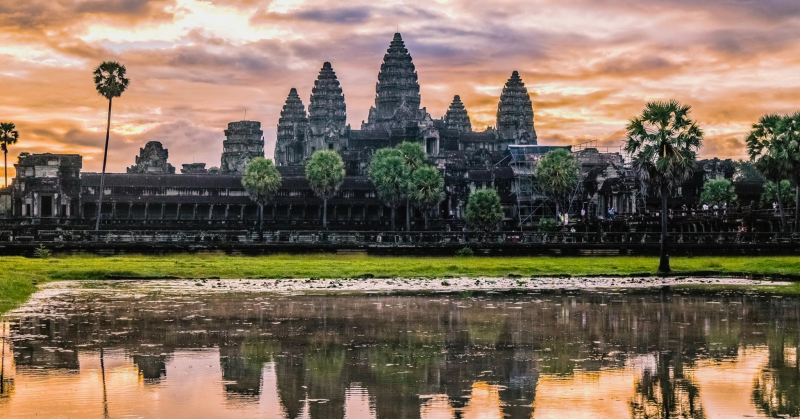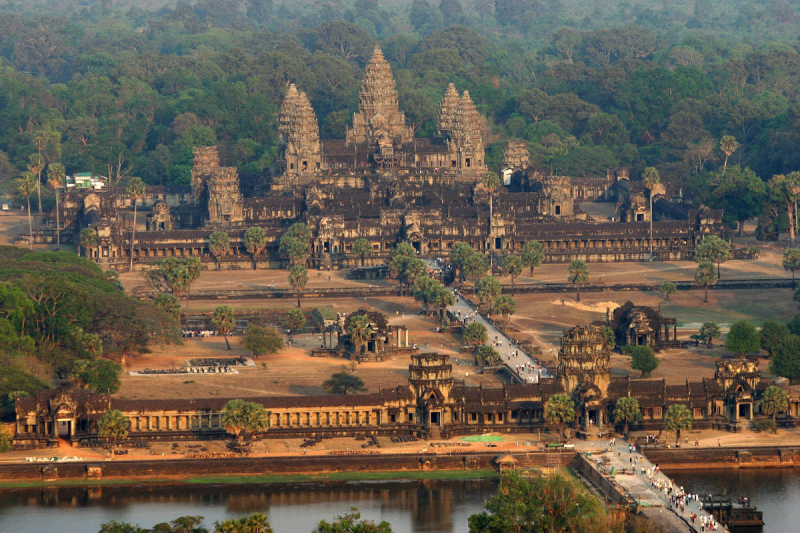Angkor
Angkor is a translation of the Sanskrit word "nagara," which meaning "city". It was a prosperous ancient metropolis that served as the Khmer Empire's capital between the ninth and fifteenth centuries. Today, Angkor is most known for the Hindu Angkor Wat Temple, which holds the record for being the biggest place of worship on Earth. It is renowned for being visited around daybreak because of the stunning sunlight above the temples. Apart from Angkor Wat, the Angkor Archaeological Park has a lot more amazing site. The woodland, rice fields, and farmlands are home to more than 1,000 temples. Highlights include the mystical and jungle covered Beng Mealea Temple, which has an early library and exquisite sculptures, and the Bayon Temple, which dates to the 12th century and is at the geographic center of the ancient city of Angkor Thom.
In the Siem Reap Province, close to the present-day city of Siem Reap, the Angkorian remains are scattered among farms and woods to the north of the Great Lake and to the south of the Kulen Hills. Over a thousand temples may be found in the Angkor region, ranging in size from unremarkable strewn-about brick ruins amid rice fields to the Angkor Wat, said to be the biggest single religious structure in the world. The majority of the temples at Angkor have undergone restoration, making them the most important example of Khmer architecture. Nearly two million people visit each year, and the entire region—including Angkor Wat and Angkor Thom—is protected as a UNESCO World Heritage Site. The ruins' preservation faces several difficulties as a result of the site's popularity with visitors.
Location: Siem Reap Province, Cambodia

















